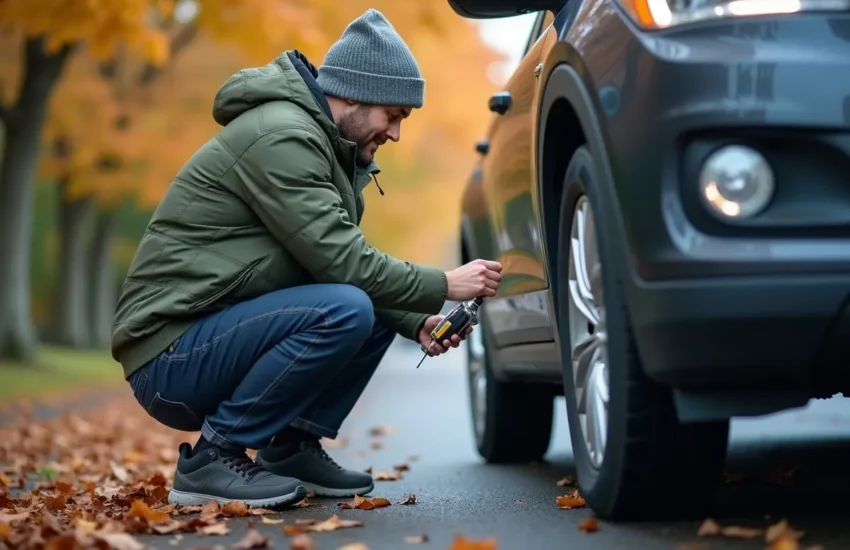How Smart Work Zones Improve Traffic Flow and Safety
It is not only the traffic flow that is improved when smart work zone systems are installed on a road, but the safety of both the workers and the motorists who pass through the area. As well as reducing the number of fatalities on the road, these ITS devices also provide real-time information to the motorists.

Safety of motorists and workers
It’s important to understand how smart work zone technology can improve the safety of motorists and workers. In addition to keeping highway workers safe, the technology can also inform drivers of potential hazards.
A common problem in working zones is the lack of accurate, real-time information. This can lead to drivers becoming frustrated and making unsafe decisions.
Several state departments of transportation are implementing smart technologies to make work zones safer for both travelers and workers. These systems include sensors, cameras, software, communications, and hardware. They can communicate real-time information to drivers about the condition of the road and the speed limit in the area.
Smart work zone technology can reduce accidents, enhance worker and driver safety, and decrease frustration among motorists. The systems can be implemented in temporary closures and are especially helpful when unexpected roadway conditions arise.
The Smart Work Zone solution can provide real-time travel information, dynamic lane merging options, and remote access to every device on a work zone site. All of these tools are designed to minimize roadway congestion and increase the safety of all users of the system.
Smart work zones are now being deployed across the United States. About 80% of states have at least one smart work zone in place. Compared to other types of roadways, traffic in a work zone is more complex and requires a greater level of alertness. Traffic is often confined to a single lane, and vehicles must slow down or move over to avoid rear-end collisions.
Several companies have developed smart work zone technology in different states. Illinois, for instance, has integrated these systems into its highways. Using smart work zone technology, the Illinois Tollway has become a finalist in the 2020 National Safety Council Green Cross for Safety Award.
Smart work zones also incorporate presence lighting. Drivers in a work zone are encouraged to put away distractions such as cell phones, and to give space to those working in the road. Other solutions such as queue warning systems can alert approaching motorists of slower-than-normal traffic.
The safety of drivers and workers in work zones is a top priority, and there are numerous solutions to address these problems. As construction projects continue to expand, more and more people will be exposed to hazardous conditions. Increasing the visibility of work zones will reduce accidents and fatalities.
Reduced fatalities in the U.S.
Car crashes are the second leading cause of unintentional injury in the United States. Considering that most Americans drive a vehicle at some point in their lives, reducing fatalities in motor vehicle crashes is an important policy goal.
However, the statistics show that the number of people killed in crashes has not been decreasing at a rate sufficient to meet the WHO’s target of halving deaths by 2030. The United States has made some progress in this area.
There are a variety of interventions that can help decrease car crash fatalities. One of the most effective is the use of a manual 3-point seatbelt. This type of belt allows drivers to point-estimate its effectiveness based on their age, vehicle type, and crash type. It reduces fatalities by about 45 percent.
Other notable efforts include improving speed limit signage, installing speed cameras, and increasing pedestrian safety. Some cities are also trying a new approach: Vision Zero. In the Vision Zero movement, a city’s traffic safety plan should involve a “walkable” and pedestrian-friendly road system.
While the numbers are not exactly encouraging, the road to success lies in focusing on people first. These are the most vulnerable road users. By implementing safety measures to protect pedestrians, drivers will be safer and the roads will be less prone to accidents.
Aside from the Vision Zero movement, there are a host of other road safety measures that states and localities can implement. For example, roundabouts can be used to mitigate deaths in central turn lanes.
Although the number of motor vehicle crash fatalities has been declining in recent years, the US still lags behind other nations in terms of fatalities. This is a problem for many reasons. Lack of federal transportation funding can prevent state and local governments from making the changes that are necessary to improve safety.
Despite the progress made to date, it is difficult to say whether the US will ever reach its car fatality reduction target of halving deaths by 2030. However, the United States has been able to make progress in some areas, such as reducing early deaths due to tobacco, alcohol, and poor diet.
Real-time information to motorists
Smart work zones are a new technology that improves traffic flow and safety by providing real-time information to motorists. This system is designed to reduce delays, crashes and fatalities while increasing travel speeds.
The system consists of a portable sign that displays real-time data on roadside sensors. It is designed to notify drivers of work zone traffic conditions and to inform them of alternative routes that they can take.
Another component of the system is a dynamic merging system that changes the time it takes to merge based on the level of traffic in the area. As a result, it reduces the likelihood of crashes due to unsafe merging.
A related but more technical system is Travel Time/Delay Monitoring, which alerts motorists to upcoming work zones and provides them with information to prevent congestion. In addition, it uses real-time data to provide a more accurate estimation of travel times.
Several states, including Arizona, California, Colorado, Illinois, Iowa, Kansas, Kentucky, Minnesota, Missouri, Nebraska, and New York, have implemented smart work zones. Other than the obvious benefits of reduced congestion and decreased crash rates, the smart work zones have also been associated with reduced incidents.
One of the most important parts of the smart work zones is the sensors. These devices can detect slow-moving construction vehicles and automatically adjust their schedules to keep traffic flowing. They can also integrate with a variety of other systems, such as DOT511 or WAZE.
Aside from the real-time information, smart work zones are characterized by the presence of message signs. Both static and dynamic signs are designed to deliver informative messages to drivers. Generally, stationary signs display operational information, while dynamic signs give drivers a few options in sequence.
There are several companies that have developed smart work zones in various states. These include Ver-Mac, which is a manufacturer of the equipment. Others, such as Wisconsin DOT, have conducted preliminary diversion studies. While these studies may be helpful for planning optimal placement, they do not address all aspects of the systems.
Ultimately, a smart work zone can be the best solution to a lot of traffic problems, and it can improve roadway safety, reduce crashes and improve the overall traffic flow. However, a successful implementation requires some well-defined guidelines.
Design guidelines for deployment of work zone ITSs
The goal of Intelligent Transportation Systems in work zones is to improve public safety and mobility, as well as reduce traffic delay. This is facilitated by the use of wireless and optical communications, radar, microwave, and other detection technologies.
For successful implementation of ITS applications in work zones, it is important to follow systematic guidelines. These include selection of ITSs, feasibility assessment, evaluation, and deployment.
The preliminary feasibility assessment tool, developed by researchers, is a good resource for identifying candidate work zone ITSs. It also allows agencies to determine if a project is eligible for ITS deployment.
Several States’ Departments of Transportation have also developed manuals for work zone ITSs. Each contains information about the different systems, including individual components, benefits, warrants, and typical layout diagrams.
Another resource, the Colorado Department of Transportation’s Design Guidelines for Including ITSs on Projects, describes five ITSs: variable speed limit signs, portable signal systems, ramp metering, dynamic lane merge systems, and travel time estimation systems. In addition, it contains information about other components, such as environmentally responsive systems, and provides an overview of each ITS.
A revised work zone ITS feasibility assessment tool has been created, which includes 21 factors. Using this tool, agencies can develop scoring criteria that are appropriate for their own purposes.
Identifying ITS candidates involves assessing their feasibility, analyzing their performance, and determining their suitability for the project. By integrating the ITS with existing ITS infrastructure, agencies can reduce the cost of deployment.
Performance measures, such as volume, queue length, safety, and mobility, help assess the overall operations of a work zone. They provide more information to the project designer, who can then use these results to better understand the performance of the work zone and to evaluate the system’s future potential.
Finally, the design of a work zone ITS should consider integration with existing ITS infrastructure. If physical connections are available, hard-wired communication is possible. Likewise, it is important to maintain the standards of the agency that has approved the ITS.
Implementation of work zone ITSs requires careful engineering judgment and an understanding of the agency’s standards. However, these non-monetary benefits are difficult to convert into comparable measures.


